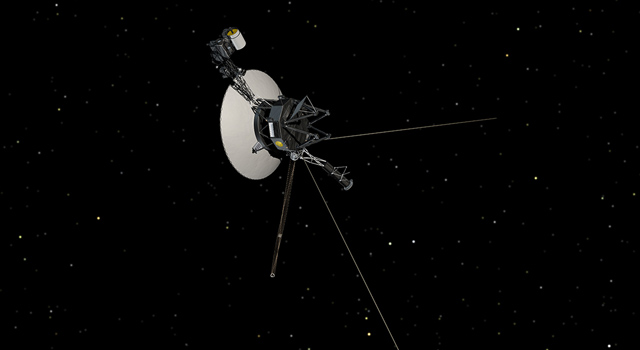News | March 14, 1988
Rank Prize Awarded to JPL Engineers

The Rank Prize for Optoelectronics was awarded in London today (Mar. 14) to two JPL engineers and former JPL contractor in recognition of their work on vidicon cameras, such as those carried on the Voyager spacecraft mission to the outer planets.
JPL engineers Robert F. Lockhart and Gary C. Bailey and Ann Hutchinson, formerly of General Electrodynamics Company, Garland, Tex., accepted the award in ceremonies at the Royal College of Physicians. The joint prize of 30,000 pounds sterling will be equally divided by the three.
The Rank Prize Funds were organized in 1972 by the late British businessman Lord James McArthur Rank to promote the sciences of nutrition and optoelectronics. These two areas of research were of special interest to Rank, and he considered them to be of great significance.
The award honors the contributions the three made in developing unique photosurface for the vidicon cameras possessing high sensitivity and exceptionally long image storage time. The longevity and sensitivity of the cameras made possible the remarkable images of Jupiter, Saturn and Uranus and of the moons and rings of those planets taken by the Voyager 1 and 2 spacecraft, launched in 1977. Voyager 2 will encounter the planet Neptune in August 1989.
"The superior performance of the Voyager cameras made possible the discovery of active volcanoes on the Jupiter satellite Io and the recognition of faint rings of fine particles orbiting Jupiter itself," the award reads. "The extraordinary sensitivity, dynamic range and reliability of the cameras is illustrated by the remarkably detailed images of the Uranian system, where solar illumination is less than one percent of that at the Earth."
It continues: "The work of Gary Bailey, Ann Hutchinson and Robert Lockhart represents not only splendid achievement in optoelectronics, but has played key role in one of the greatest voyages of exploration ever underaken by mankind."
Hutchinson developed the unique amorphous selenium sulfur photosurface for vidicons first used on planetary flybys in the mid-1960s. She and Bailey at JPL later improved the photosurface so images could be stored up to 10 minutes, and improved the ultraviolet response of the vidicon tube to permit imaging at shorter wavelengths.
These developments aided the success of the Voyager television experiment in several ways. Extending the image storage allowed for very long exposures that are required to detect very faint objects (such as the wispy rings found around Jupiter by Voyager's cameras). Extended storage time also allowed images to be slowly scanned from the vidicon and radioed directly to Earth without intermediate storage on spacecraft tape recorder.
JPL's Lockhart contributed high-accuracy digital scanning system for Voyager's vidicon cameras to replace the analog scanning used on cameras for earlier missions. This provided the precision and stability needed for the Voyager cameras to meet and exceed mission objectives.
